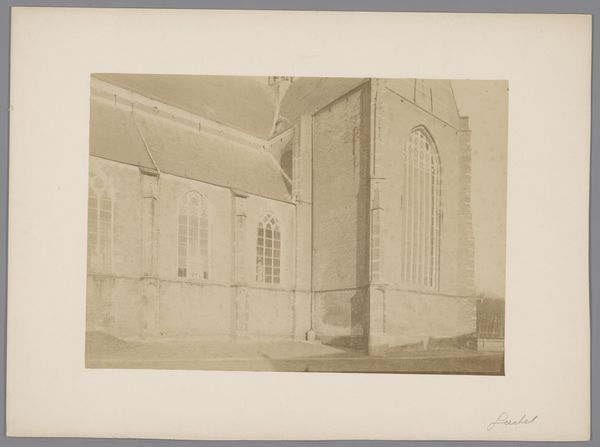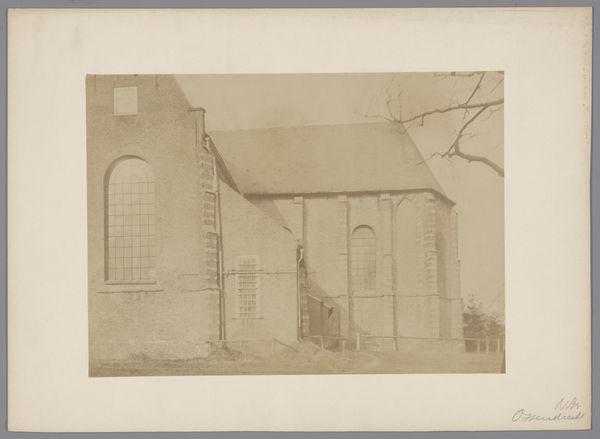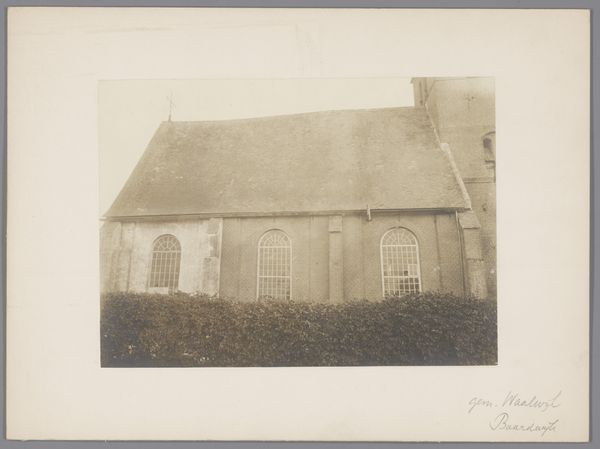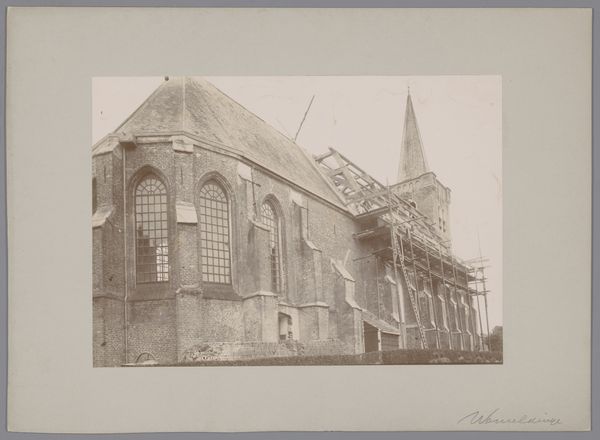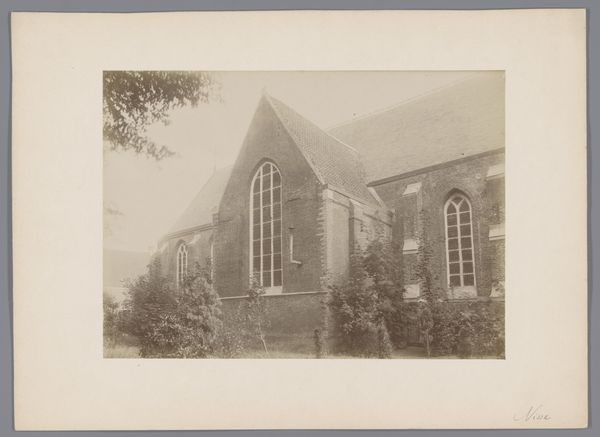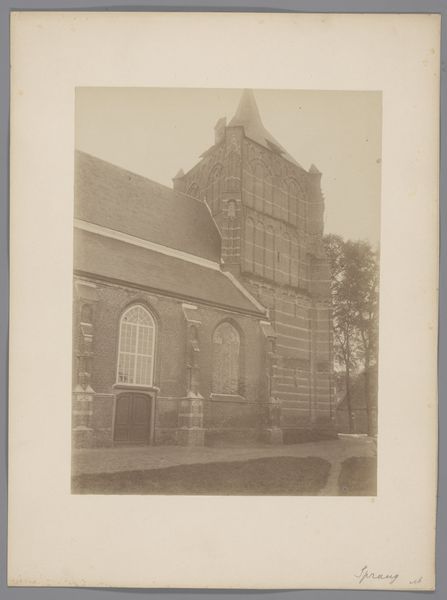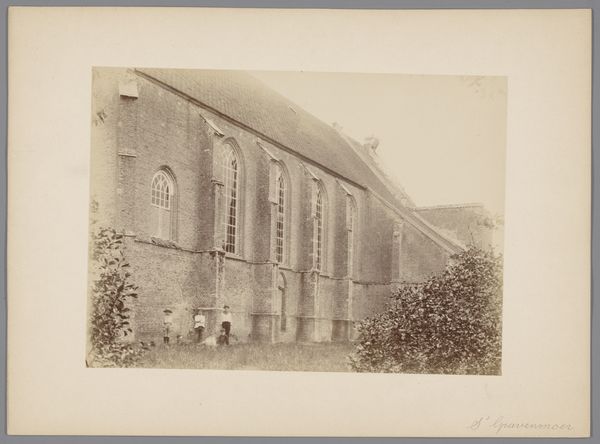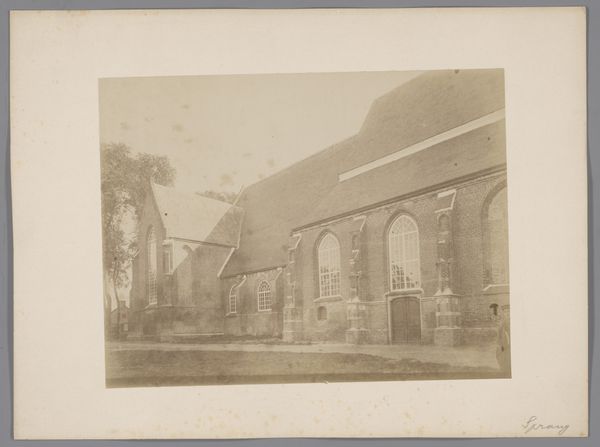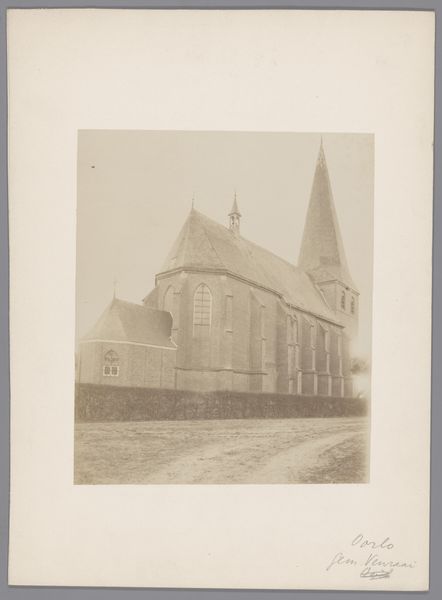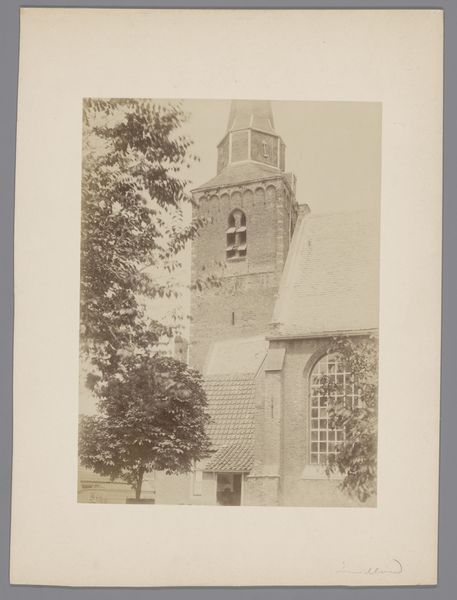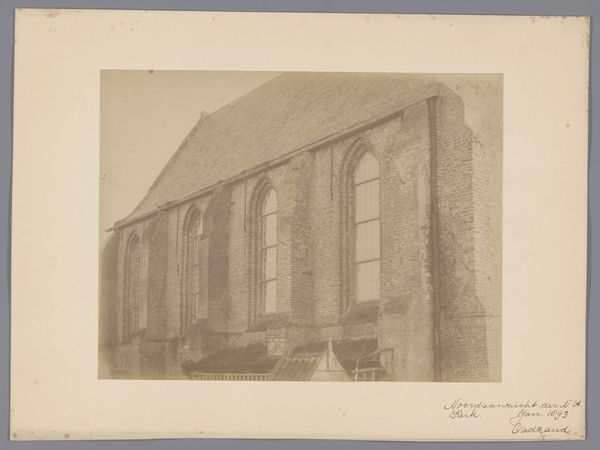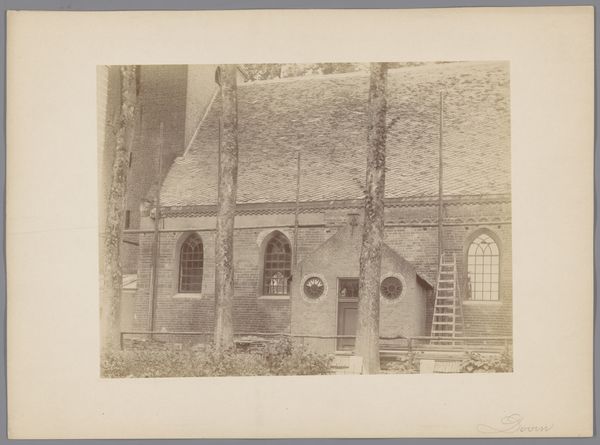
Dimensions: height 175 mm, width 234 mm
Copyright: Rijks Museum: Open Domain
Curator: Before us is an albumen print from 1895, titled "Gedeelte van de zuidzijde van de Hervormde Kerk te Waalwijk"—a partial view of the south side of the Reformed Church in Waalwijk. It is work attributed to an anonymous photographer affiliated with Monumentenzorg, the Dutch heritage organization. Editor: My first impression is one of quiet strength. There's a lovely simplicity in the way the brickwork is rendered, a testament to functional design. The photograph almost has an otherworldly feel with those soft shades. It's stark but has a distinct calmness. Curator: It’s interesting you note the quietness. Considering Monumentenzorg's role, we can appreciate how this image serves as a historical document, quietly advocating for the church's preservation amid changing social values and industrial advancement. Think of the labor invested in creating and maintaining this built environment, and then the photographic labor in documenting it with early photographic processes. Editor: Absolutely. The very choice to document it in 1895, likely signals an anxiety about preservation. Who was it for, really? This church as a site likely saw centuries of sermons, community gatherings, and also exclusion depending on identity. These structures are seldom neutral spaces; the social hierarchy is always built into them as surely as those bricks were laid. Curator: The brickwork itself interests me. It is a building material that democratizes architecture in some ways. Easy enough to mass produce and relatively cheap for the era, at least when compared to cut stone, it becomes this common material across Europe even used here in elaborate architectural accents like on the edges. It’s really the perfect industrial revolution material. Editor: It also speaks to power; in that way, its proliferation reveals so much. And consider the windows! Their delicate tracery provides an elegant contrast to the sturdy brick. Those aren’t just there for aesthetics; it’s about power and money as well! How else does a relatively new industrial society establish social control and continuity with the religious powers that came before? Curator: And, too, the way this anonymous photographer chose their angle—presenting a segment of the building. Not the whole grand facade, but this quieter side. The angle flattens it all, so we aren’t sure about the actual depth of field here which only further isolates and removes the structure. Editor: So, perhaps by focusing on its construction and function, this work prompts consideration of heritage and how architecture intertwines with broader narratives about social and religious forces. Curator: Agreed. Ultimately, it's about interrogating our own assumptions about art, labor, and social meaning intertwined in material culture. Editor: Definitely a chance for each of us to reconsider how structures of power echo through history and into our own understanding of heritage.
Comments
No comments
Be the first to comment and join the conversation on the ultimate creative platform.
